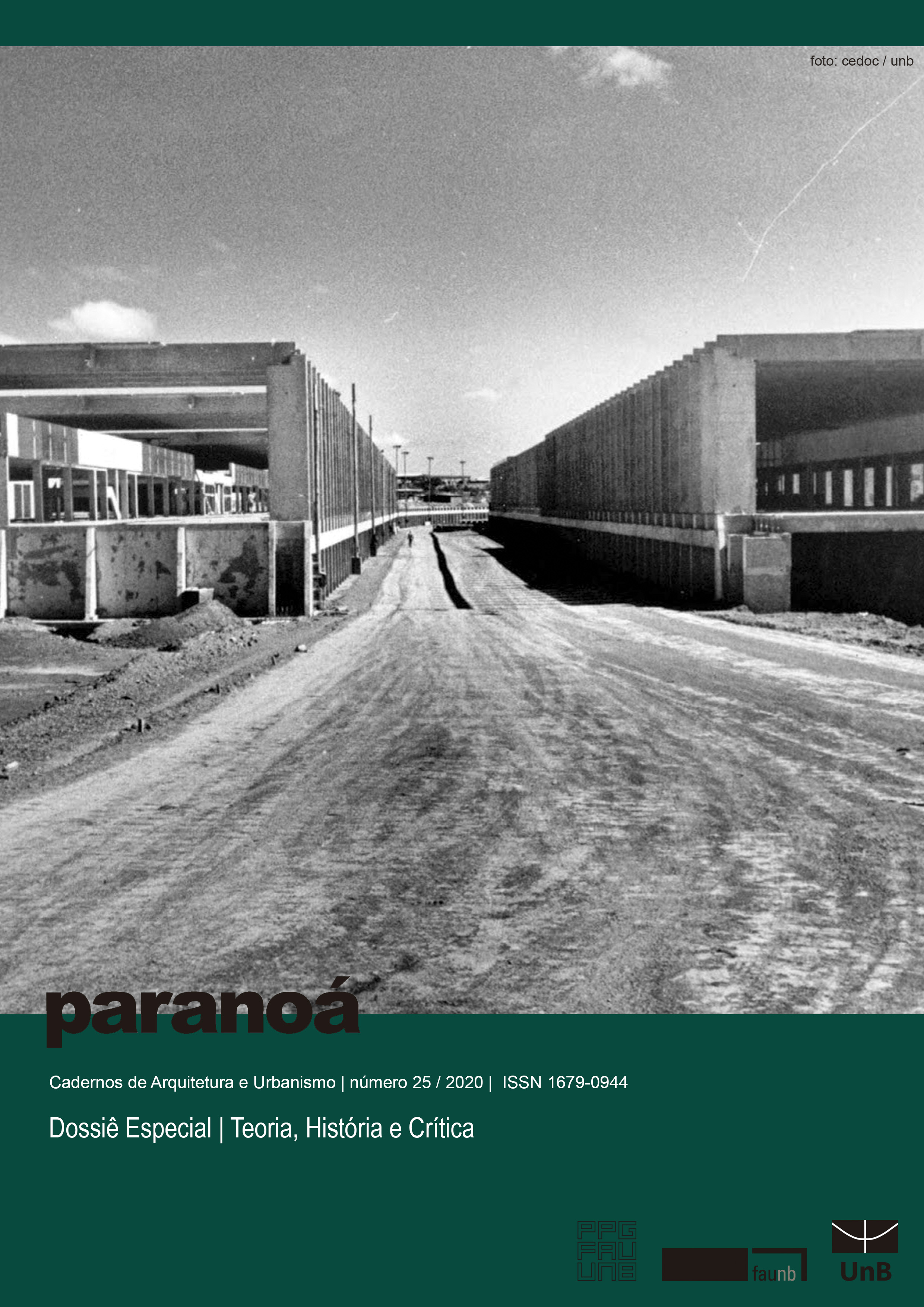Industrial heritage and cultural recognition - The working village of the Santista Papel Company in Cubatão-SP
The working village of the Santista de papel Company in Cubatão-SP
DOI:
https://doi.org/10.18830/issn.1679-0944.n25.2020.04Keywords:
company towns, industrial architecture, industrial heritage, heritage preservation policiesAbstract
The construction of company tows became common in Brazilian manufacturing enterprises since the 19th century. In addition to the need to provide housing and convenience in order to attracting and retaining manpower, they were built as a form of employee control. With the process of dismantling these kind of company, especially from the second half of the twentieth century, many became object of interest as cultural heritage. In this sense, the present article analyzes aspects of the process of implantation to abandon the working village of the Santista de Papel Company in Cubatão, because it’s pioneering in the Baixada Santista. From this information it is concluded that its importance is currently in the field of architectural history and preservation, while verifying the fragility of policies for industrial heritage at the regional level.
Downloads
References
CHUVA, Marcia Romeiro. Por uma história da noção de patrimônio cultural no Brasil. In: Revista do Patrimônio Histórico e Artístico Nacional. Rio de Janeiro: IPHAN, nº 34, 2012, p. 147-165.
COMPANHIA FABRIL DE CUBATÃO ”“ FÁBRICA DE PAPEL. Revista A Cigarra, 15 set. 1922, Ano X, nº 192.
CORREIA, Telma de Barros (Org.). Forma urbana e arquitetura de vilas operárias e núcleos residenciais de empresas no Brasil. São Paulo: Annablume. 2011.
COUTO, Joaquim Miguel. Entre estatais e transnacionais: o polo industrial de Cubatão. 2003. 220f. Tese. (Doutorado em Economia) ”“ Faculdade de Economia da Universidade de Campinas, Campinas.
DALLA COSTA, A. J. História e historiografia empresarial: acesso e utilização de arquivos e fontes. In: DALLA COSTA, A. J.; GRAF, M. E. de C. Estratégias de desenvolvimento urbano e regional. (Org.). Curitiba: Juruá, 2004. p. 121-141.
DIÁRIO OFICIAL DO ESTADO DE SÃO PAULO. Disponível em https://www.jusbrasil.com.br/diarios/. Acesso em fev. 2015.
ENCICLOPÉDIA DO CINEMA BRASILEIRO. São Paulo: Editora Senac, 1997, p. 178.
FUNDAÇÃO ARQUIVO E MEMÓRIA DE SANTOS. Disponível em http://www.fundasantos.org.br/page.php?203. Acesso em 11 nov. 2019.
HISTÓRIA DA INDÚSTRIA DE CELULOSE E PAPEL NO BRASIL. São Paulo: ABTCP, 2004, p. 30.
LOURES, Luís. A paisagem pós-industrial da Foz do Arade, uma visão do passado com vista para o futuro, 2010. Disponível em www.comum.rcaap.pt, acessado em 22/11/2019.
PINTO, Celma do Carmo de Souza. Paisagem industrial em Cubatão-SP: o caso da Companhia Fabril do Cubatão e da Usina Henry Borden. 2015. 197 f., il. Dissertação (Mestrado em Arquitetura e Urbanismo) ”” Universidade de Brasília, Brasília, 2015.
PIQUET, Rosélia. Cidade-empresa: presença na paisagem urbana brasileira. São Paulo: Editora Jorge Zahar, 1998, p. 04.
PREFEITURA MUNICIPAL DE CUBATÃO. Cubatão ontem e hoje: um marco do desenvolvimento. Cubatão: PMC, 1970.
SUZIGAN, Wilson. Indústria Brasileira: Origem e Desenvolvimento. São Paulo: Hucitec/Unicamp, 2002.
Downloads
Published
How to Cite
Issue
Section
License
Autores que publicam nesta revista concordam com os seguintes termos:
- Autores mantém os direitos autorais e concedem à revista o direito de primeira publicação, com o trabalho simultaneamente licenciado sob a Licença Creative Commons Attribution que permite o compartilhamento do trabalho com reconhecimento da autoria e publicação inicial nesta revista. http://creativecommons.org/licenses/by/4.0
- Autores têm autorização para assumir contratos adicionais separadamente, para distribuição não-exclusiva da versão do trabalho publicada nesta revista (ex.: publicar em repositório institucional ou como capítulo de livro), com reconhecimento de autoria e publicação inicial nesta revista.
- Autores têm permissão e são estimulados a publicar e distribuir seu trabalho online (ex.: em repositórios institucionais ou na sua página pessoal) a qualquer ponto antes ou durante o processo editorial, já que isso pode gerar alterações produtivas, bem como aumentar o impacto e a citação do trabalho publicado (Veja O Efeito do Acesso Livre).















